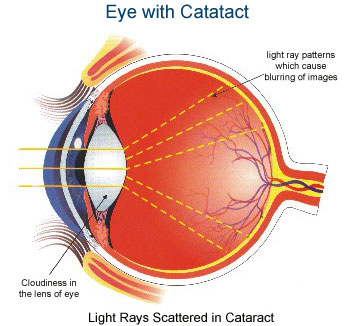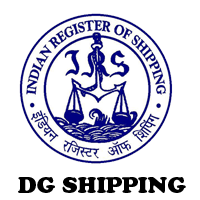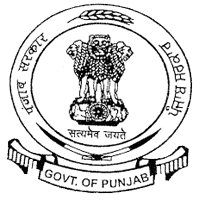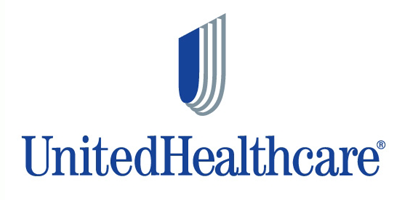What is a cataract?
Cataract surgery is a microscopic procedure that is performed under local/topical anesthesia. The removal of cloudy lens is carried out with phacoemulsification, which is a micro-incision technique of cataract procedure. During phacoemulsification, a probe breaks the cataract into tiny pieces and sucks them out.
For implantation of a foldable lens, a small incision measuring 2.8 mm to 3.0 mm is made and for the implantation of non-foldable lens, a 5 mm incision is carried out. Both the incisions do not require stitches to heal and heal by themselves. You can discuss with ophthalmologist about your choice of lens.
Will I need to use glasses after my cataract surgery?
This largely depends on the type of intraocular lens used during the surgery. The advanced intraocular lens help to diminish the depedency on glasses and in many cases, even reading glasses can also be avoided. Wearing of thick eyeglasses is rarely required.
Is cataract found only in older people?
Cataracts are commonly seen in patients above 60 years of age. Infants or young adults are rarely seen with cataracts.
What are the advantages of modern cataract surgery?
• It does not require any stitches.
• It does not require any injection.
• The procedure doesn’t require any hospitalization. The patient can go home in about 30 minutes after the procedure.
• The patient can benefit with different lens implants with the surgery.
Factors that you should consider in making right choice of IOL

- What is nature of your profession? Do you have an office job or an outdoor job? Do you have very fine work like graphics, painting or carving?
- What is you lifestyle and hobby? Are you ‘indoor’ person, or do u have interest in outdoor activities?
- Do you need excellent unaided vision as per need of your profession like pilots,driversetc?
- How important is night vision or vision in dim light for your job?
- Do you have astigmatism or cylindrical glasses power? what is your refractive error-nearsighted of farsighted?
- Would you mind using glasses routinely after surgery or would you rather not?
- And last but not least, if you are paying for the cost of surgery from the your pocket ,what is your budget? The cost of certain IOLs can be exorbitantly high.
Refractive cataract surgery has a more aggressive goal: To enable the person who has cataracts to regain good vision and to eliminate or greatly reduce their need for corrective eyewear, including reading glasses, after surgery.
Monofocal IOL- These are simplest types of foldable IOL available. These give good distant vision but you have to use reading glasses for near work or reading, These are relatively low cost and if you don’t mind waering glasses after surgery you can opt for these lenses.
NEW GENERATION OF IOL
The introduction of new premium intraocular lenses (IOLs) has been key to the development of refractive cataract surgery. These premium IOLs have the capability of providing good uncorrected visual acuity at all distances after cataract surgery, eliminating or reducing the need for eyeglasses after surgery.
- Multifocal IOL- These IOL not only give good vision for distance but give good near vision also. However you may need glasses for reading fine print in telephone directory. Some patient also complain of glare while driving in night .So it is not suitable for patient who routinely drive at night. Cost of these IOL is high
- Accommodative Lens- these lenses are designed in such way that they,like natural lens, can change power for different distances and hence give good vision without glasses for all distances.These lenses although in use are extremely costly and design has not been perfected yet..If you have fad for the latest thing and do not mind the cost,you may go for it, keeping the possible shortcomings.
- Toric intraocular lens- Toric IOLs correct astigmatism or cylindrical power. Residual astigmatism is a primary reason why people still need to wear eyeglasses after conventional cataract surgery.these IOL may need readjustments and are quite costly.
- Aspheric IOL – These lenses have a design such as used in cameras and telescopes which increases the quality if vision by removing or reducing the optical aberrations. These give better contrast sensitivity particularly at night ytimr.these cost marginally more that routine IOL and is good for artists,drivers,pilots etc.
Laser Cataract Surgery
Considerable research is underway to study the use of laser technology to perform the cataract surgery procedure. Research studies suggest that laser cataract surgery may provide an additional measure of stability and accuracy, and thus has the potential to improve the visual outcome and reduce recovery time for refractive cataract surgery.
Corneal Refractive Surgery after Cataract Surgery
In addition to premium IOLs, refractive cataract surgery may involve the use of LASIK surgery, PRK, conductive keratoplasty (CK) or other corneal refractive procedures after cataract surgery to provide greater independence from eyeglasses.
If some nearsightedness, farsightedness or astigmatism remains after cataract procedures, one of these refractive procedures performed on the cornea can improve uncorrected visual acuity. For the correction of presbyopia after cataract surgery with conventional (monofocal) IOLs, a multi-focal LASIK procedure, such as PresbyLASIK is one way to reduce the need for reading glasses.
Cataract SURGERY AT Rana Hospital
When it comes to getting Cataract procedure done, experts at Rana Hospital offer best value cataract surgery in Punjab. Their range of ophthalmology services include but are not limited to cataract, LASIK, diabetic retinopathy treatment, vitreoretinal surgery, restorative surgery, and other ancillary eye services.
Find out more about cataract and other procedures by contacting us at: +91-9815709777.
Our Empanelments
we’ ve built a long standing relationship based on trust







